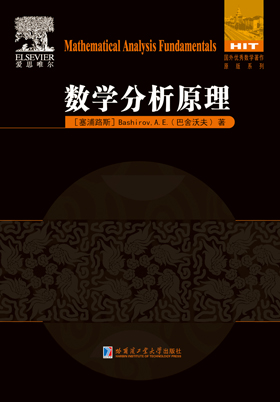【目 录】
1 Sets and Proofs 1
1.1 Sets, Elements, and Subsets 1
1.2 Operations on Sets 3
1.3 Language of Logic 4
1.4 Techniques of Proof 7
1.5 Relations 11
1.6 Functions 15
1.7* Axioms of Set Theory 18
Exercises 20
2 Numbers 25
2.1 System N 25
2.2 Systems Z and Q 29
2.3 Least Upper Bound Property and Q 32
2.4 System R 34
2.5 Least Upper Bound Property and R 37
2.6* Systems R, C, and *R 41
2.7 Cardinality 43
Exercises 47
3 Convergence 51
3.1 Convergence of Numerical Sequences 51
3.2 Cauchy Criterion for Convergence 53
3.3 Ordered Field Structure and Convergence 55
3.4 Subsequences 57
3.5 Numerical Series 59
3.6 Some Series of Particular Interest 62
3.7 Absolute Convergence 64
3.8 Number e 71
Exercises 74
4 Point Set Topology 79
4.1 Metric Spaces 79
4.2 Open and Closed Sets 83
4.3 Completeness 89
4.4 Separability 93
4.5 Total Boundedness 95
4.6 Compactness 96
4.7 Perfectness 100
4.8 Connectedness 103
4.9* Structure of Open and Closed Sets 104
Exercises 106
5 Continuity 113
5.1 Definition and Examples 113
5.2 Continuity and Limits 117
5.3 Continuity and Compactness 120
5.4 Continuity and Connectedness 121
5.5 Continuity and Oscillation 123
5.6 Continuity of Rk-valued Functions 124
Exercises 126
6 Space C(E, E_) 131
6.1 Uniform Continuity 131
6.2 Uniform Convergence 134
6.3 Completeness of C(E, E_) 137
6.4 Bernstein and Weierstrass Theorems 138
6.5* Stone and Weierstrass Theorems 142
6.6* Ascoli–Arzelà Theorem 144
Exercises 146
7 Differentiation 149
7.1 Derivative 149
7.2 Differentiation and Continuity 151
7.3 Rules of Differentiation 155
7.4 Mean-Value Theorems 158
7.5 Taylor’s Theorem 163
7.6* Differential Equations 165
7.7* Banach Spaces and the Space C1 (a, b) 169
7.8 A View to Differentiation in Rk 172
Exercises 174
8 Bounded Variation 177
8.1 Monotone Functions 177
8.2 Cantor Function 181
8.3 Functions of Bounded Variation 183
8.4 Space BV(a, b) 185
8.5 Continuous Functions of Bounded Variation 189
8.6 Rectifiable Curves 191
Exercises 192
9 Riemann Integration 195
9.1 Definition of the Riemann Integral 195
9.2 Existence of the Riemann Integral 199
9.3 Lebesgue Characterization 204
9.4 Properties of the Riemann Integral 207
9.5 Riemann Integral Depending on a Parameter 213
9.6 Improper Integrals 217
Exercises 220
10 Generalizations of Riemann Integration 225
10.1 Riemann–Stieltjes Integral 225
10.2* Helly’s Theorems 232
10.3* Reisz Representation 236
10.4* Definition of the Kurzweil–Henstock Integral 239
10.5* Differentiation of the Kurzweil–Henstock Integral 245
10.6* Lebesgue Integral 246
Exercises 250
11 Transcendental Functions 253
11.1 Logarithmic and Exponential Functions 253
11.2* Multiplicative Calculus 256
11.3 Power Series 262
11.4 Analytic Functions 268
11.5 Hyperbolic and Trigonometric Functions 274
11.6 Infinite Products 279
11.7* Improper Integrals Depending on a Parameter 287
11.8* Euler’s Integrals 295
Exercises 300
12 Fourier Series and Integrals 307
12.1 Trigonometric Series 307
12.2 Riemann-Lebesgue Lemma 310
12.3 Dirichlet Kernels and Riemann’s Localization Lemma 313
12.4 Pointwise Convergence of Fourier Series 315
12.5* Fourier Series in Inner Product Spaces 321
12.6* Cesàro Summability and Fejér’s Theorem 328
12.7 Uniform Convergence of Fourier Series 332
12.8* Gibbs Phenomenon 335
12.9* Fourier Integrals 338
Exercises 342
Bibliography 347




